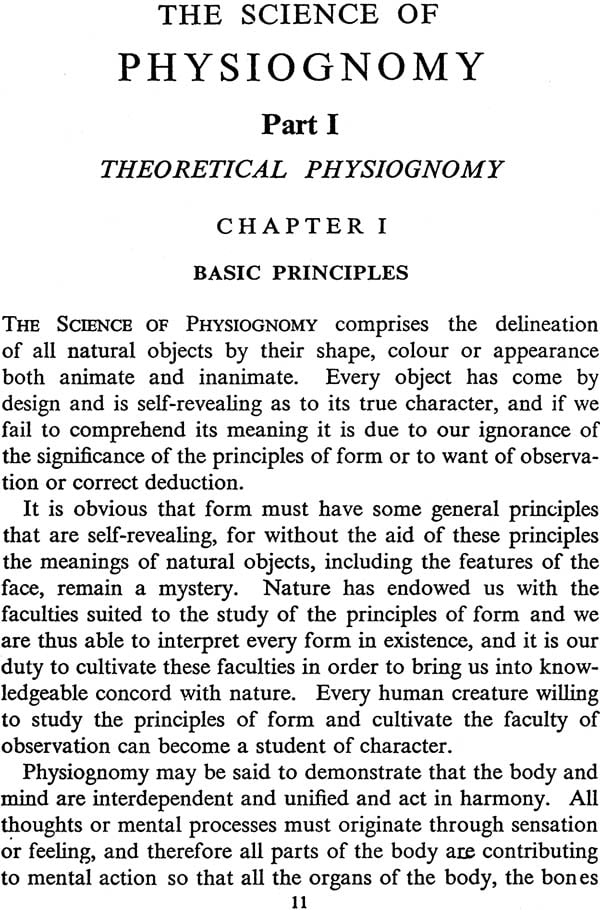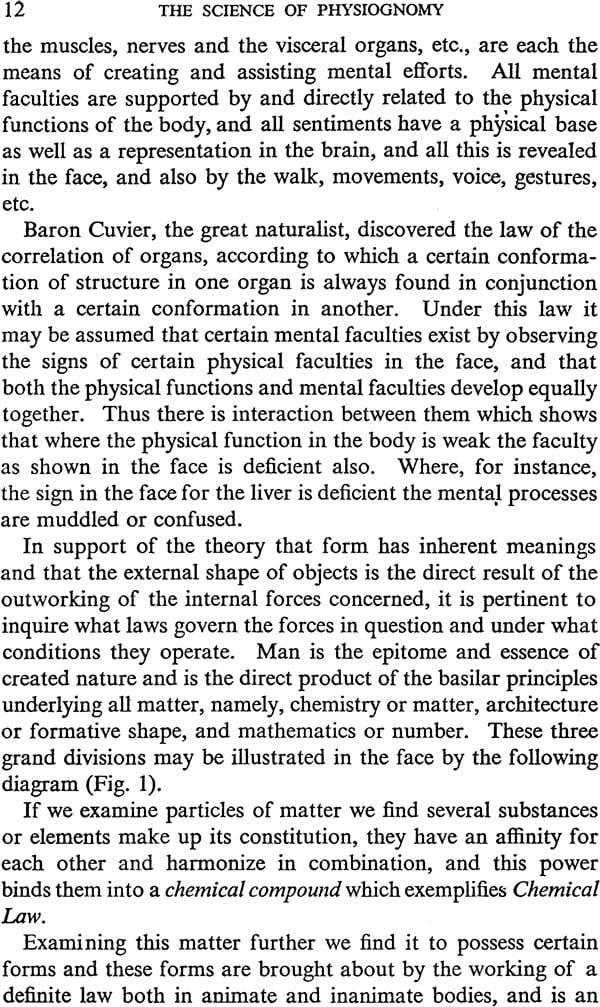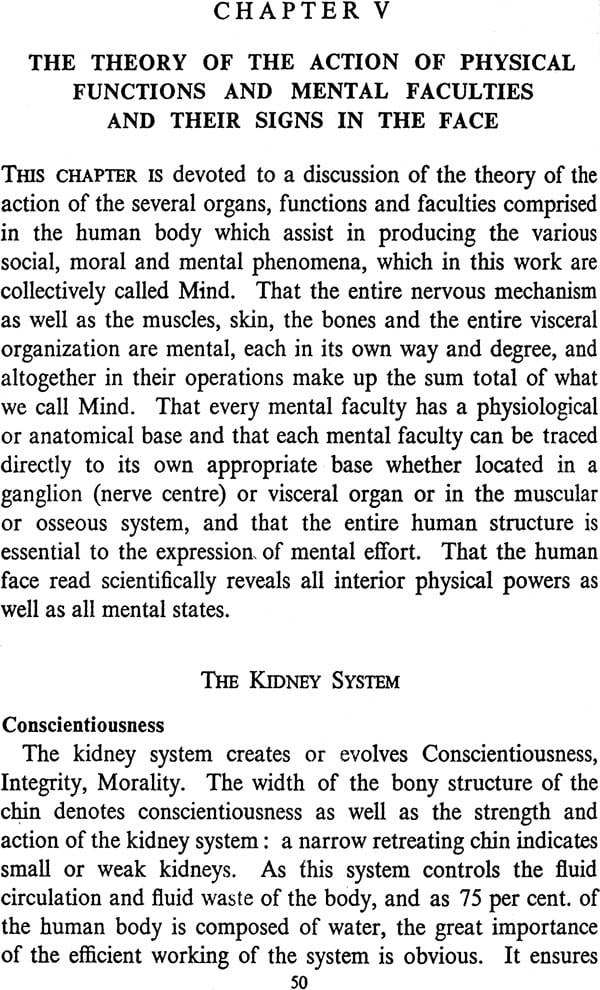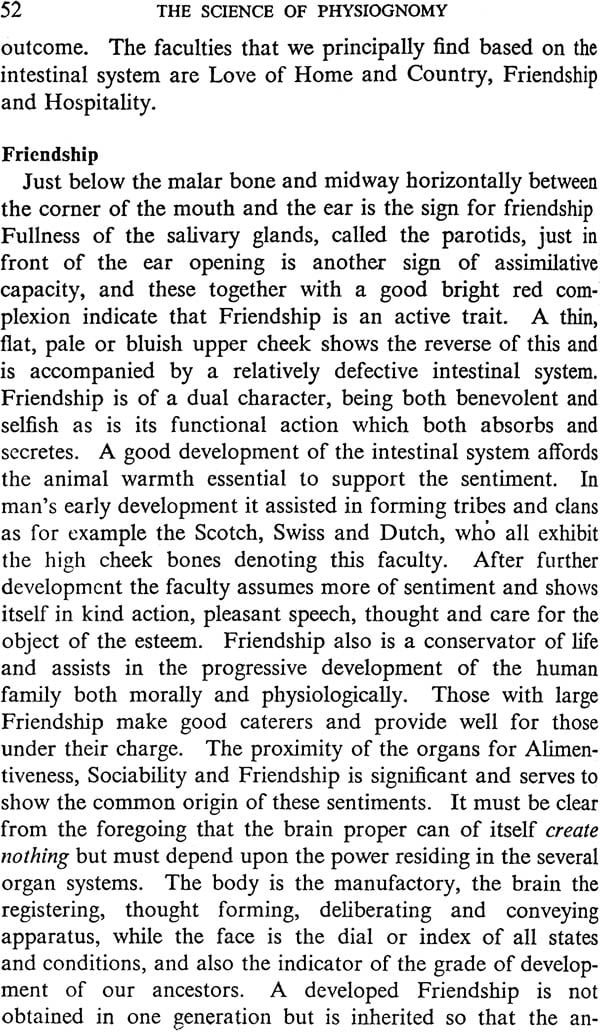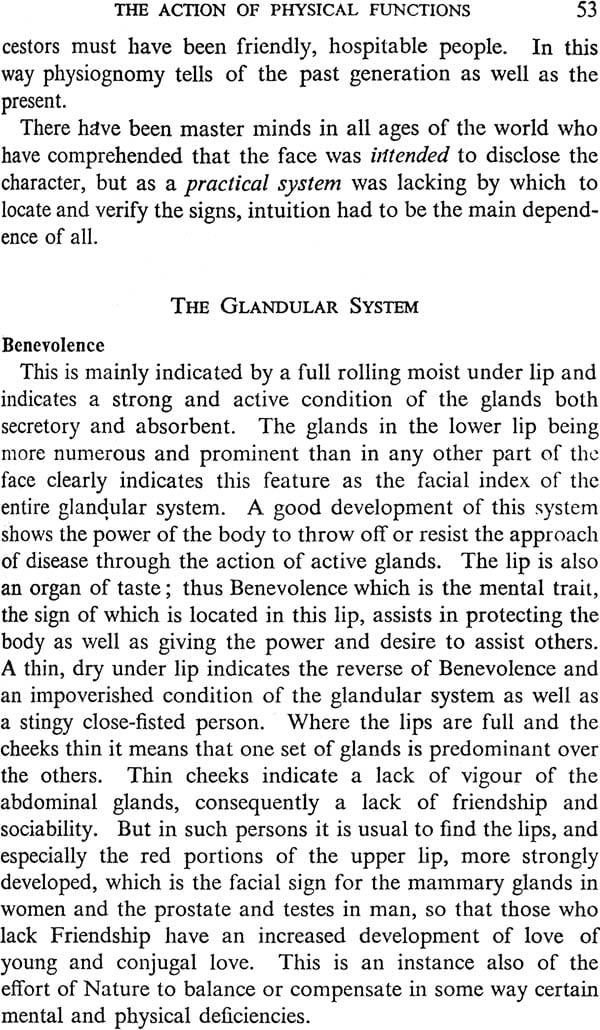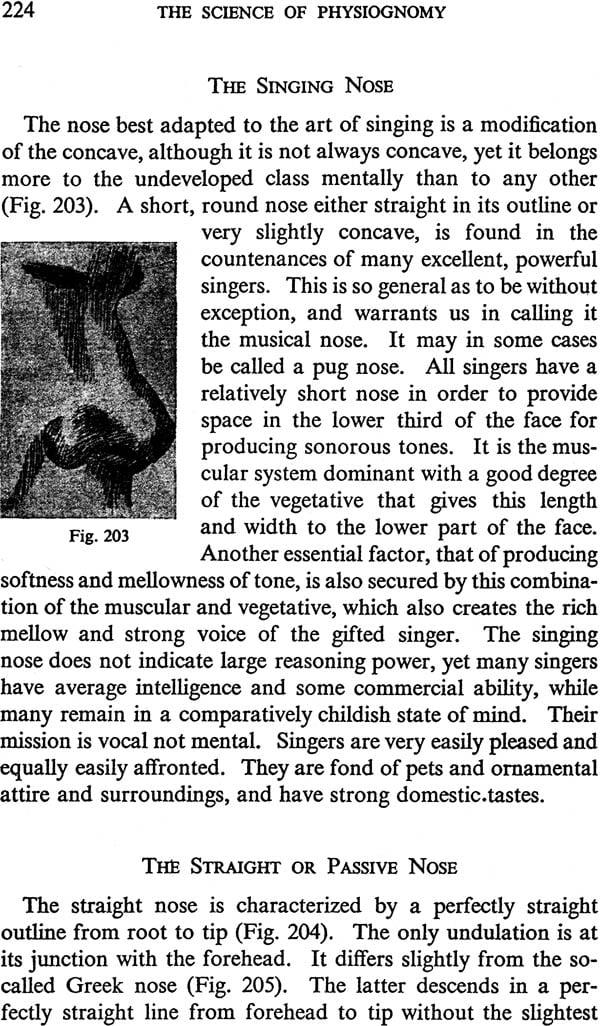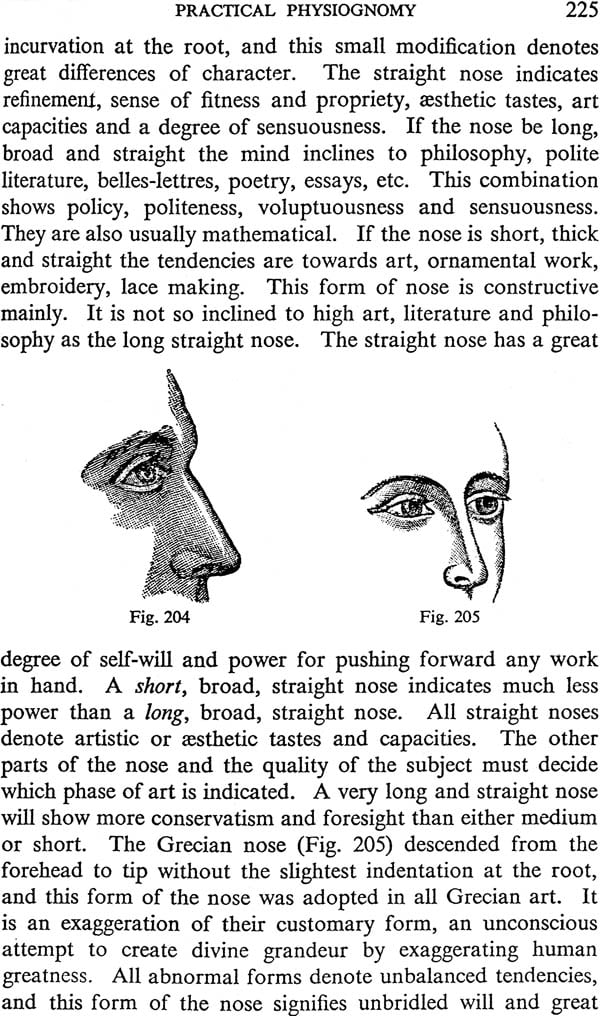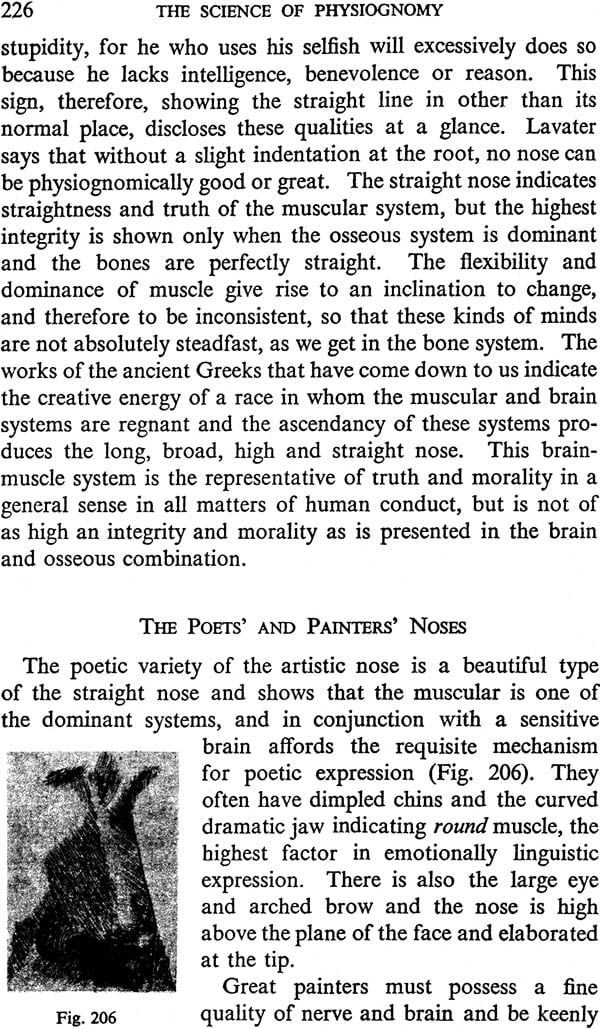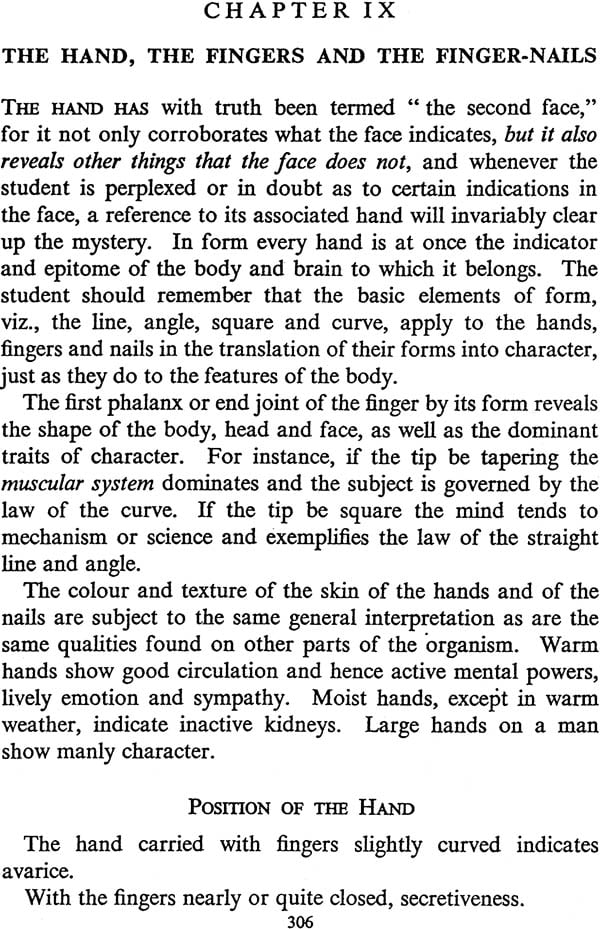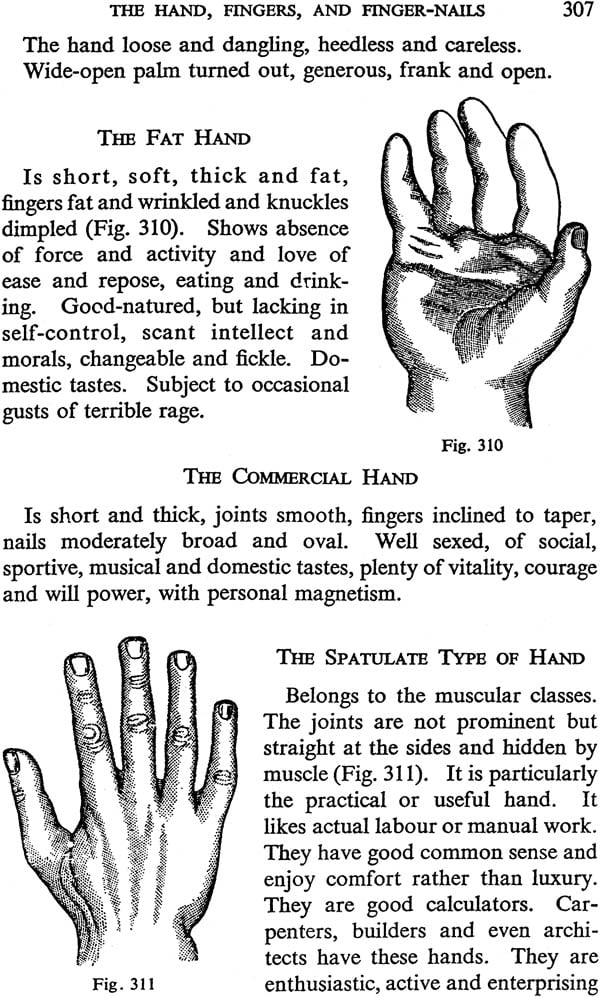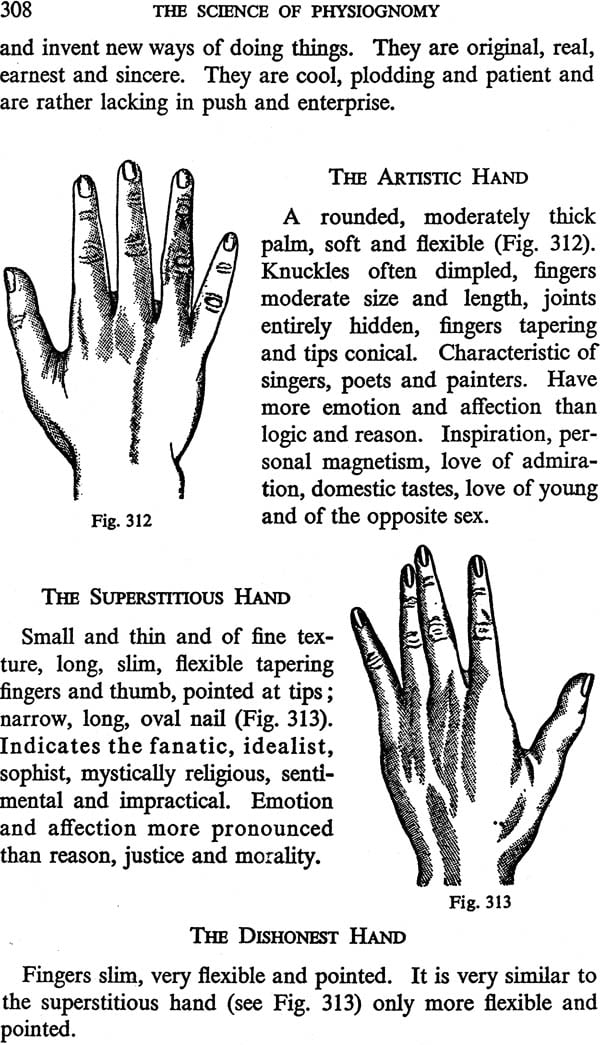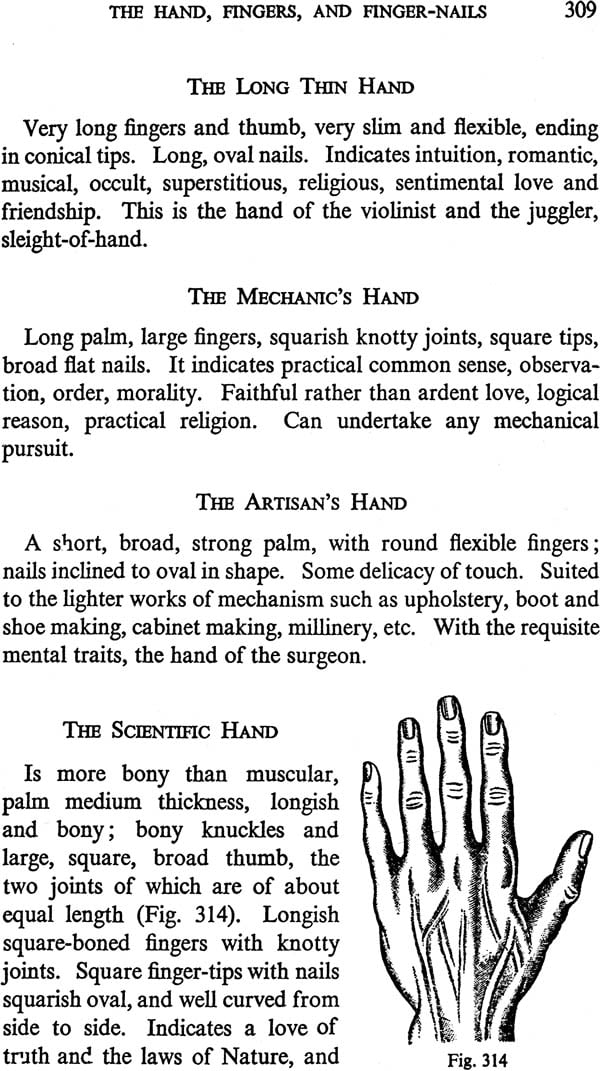
The Science of Physiognomy Face Reading (Theoretical and Practical)
Book Specification
| Item Code: | NAL924 |
| Author: | John Spon |
| Publisher: | Ajay Book Service |
| Language: | English |
| Edition: | 2007 |
| ISBN: | 9788187077947 |
| Pages: | 348 (Throughout B/W Illustrations) |
| Cover: | Hardcover |
| Other Details | 8.5 inch X 5.5 inch |
| Weight | 710 gm |
Book Description
THE SYSTEM OF PHYSIGNOMY described in this book was evolved and developed by Mary Olmsted Stanton who presented it to the world over fifty years ago. She discovered and located the facial signs of the internal organs of the body so that it is possible in the face the state of health and the degree of strength or weakness of the constitutions. She also discovered and proved that these internal organs from the physical bases from which, through the sensory nerves, the mental faculties are supported, and that there is a connection or correlation between physical function and mental faculty. She also defined and located in the face fifty main or principal faculties which together constitute the complete mental equipment of each individual. Stanton’s system is the only one in existence which is at once one in existence which is at once scientific, demonstrable and reliable.
The popular idea of Physiognomy rests mainly on observation of the features of the face alone, and the character delineations consist mostly of the barest generalizations without any methodical or scientific basis, so that it is not surprising that the subject as generally presented has met with but slight credence or acceptance amongst the intelligent public.
Without a knowledge of the underlying laws and principles that govern all organized being including man, and the meaning of the principles of from, it is impossible to delineate character correctly. It is like trying to analyse and describe some substance or liquid, without a knowledge of chemistry and physics. The human body and face are a development resulting from the operation of internal forces which determine the ultimate shape or from. To delineate character correctly, therefore, we must know what these forces are, how they work and nature of the laws that govern them. To understand the wonderful; mechanism of the mind we are obliged to comprehend something of scientific law and to base our observations upon the nanlyses of the sciences; to try to understand the harmonious interactions and relationship of parts of the body to the whole, so that we can trace the origin and development of the organs of the body and thus come to understand the harmonious interaction of function and faculty, and how the mental characteristics have been developed and become manifested in the features of the face.
To master thoroughly the meaning and apply the knowledge inhering in the “Five Organ Systems”, described in Chapter III, and the theory of physical functions and mental faculties and their sign in the face described in Chapter v of this work, is to really understand the foundation of character and to have an immediate insight into the principal capacities, powers and inclinations of the individual.
The laws, principles, and conclusions set forth in this work are incontrovertible, and lay down a definite method of character study that is both practical and reliable, which can be studies and acquired and acquired by the student with the proper aptitude, as is the case with all other professions.
Observation and reflection, added to a love of truth and a candid mind, are all that are needed for this study.
| Part I. | Theoretical Physiognomy | |
| I. | The Principles of the Science of Physiognomy | 11 |
| II. | The Basiciples of Form | |
| The Bsic Elements of Form as exhibited in the Features | ||
| Geometrical Froms of the Face | 17 | |
| III. | The Five Organ Systems | |
| Vegetatibe | ||
| Thoracic | ||
| Muscular | ||
| Osseous | ||
| Brain and Nerve | 26 | |
| IV. | The Sub-Basic Principle of Physiognomy | |
| Colour | ||
| Compensation | ||
| Health | ||
| Proportion or Harmonious Development | ||
| Quality | ||
| Size | 36 | |
| V. | The Theory of Physical Functions and Mental Faculties and their Sign in the Face | |
| The Kidney System | ||
| The Intestinal System | ||
| The Glandular System | ||
| The Reproductive System | ||
| The Liver | ||
| The Nerves of the Skin | ||
| The Glandular System and Olfactory Ganglion | ||
| The Osseous System | ||
| The Osseous and Muscular Systems | ||
| The Muscular System | ||
| The Osseous and Nervous Systems | ||
| The Muscular and Brain System | ||
| The Glandular and Arterial Systems | ||
| The Brain and Nerve Systems | ||
| The Five Organ Systems | ||
| The Brain System | ||
| The Brain and Nervous System | 50 | |
| Part II. | Practical Physiognomy | |
| VI. | The Three Natural and Primitive Divisions of the Face created by the Mouth, the Nose and the Eyes | |
| The Facial Signs of the Visceral Oragans | ||
| Mental Signs of Character in the Face | 71 | |
| VII. | location and Descripition of the Fifty Signs of Character in the Face | |
| Conscientiousness | ||
| Firmness Eonomy | ||
| Love of Home | ||
| Patriotism | ||
| Benevo-lence | ||
| Bibativeness | ||
| Alimentiveness | ||
| Amativeness | ||
| Love of Young | ||
| Mirthfuluness | ||
| Approbativeness | ||
| Friendship | ||
| Hospitality | ||
| Pneumativeness | ||
| Colour | ||
| Sanativeness | ||
| Self Esteem | ||
| Modesty | ||
| Force | ||
| Resistance | ||
| Secretiveness | ||
| Cautionsness | ||
| Hope | ||
| Analysis | ||
| Mental Imitation | ||
| Sublimity | ||
| Ideality | ||
| Human Nature | ||
| Acquisitiveness | ||
| Constructiveness | ||
| Veneration | ||
| Executiveness | ||
| Self-Will | ||
| Credenciveness | ||
| Prscience | ||
| Form | ||
| Size | ||
| Observation | ||
| Memory of Events | ||
| Locatlity | ||
| Weight | ||
| Language | ||
| Music | ||
| Time | ||
| Order | ||
| Calculation | ||
| Causality | ||
| Comparison | ||
| Intuition | 78 | |
| VIII. | Motion | |
| Gestures and Movements | ||
| Differences in the Form of the Internal Organs | ||
| The Analysis of the Features of the Face | ||
| The Chin | ||
| The Jaw | ||
| The Lips | ||
| The Voice | ||
| The Mouth | ||
| The Cheeks | ||
| The Nose | ||
| The Eye | ||
| The Nictitating Fold | ||
| The Eyelashes | ||
| The Interciliary Space | ||
| The EYEBROWS | ||
| The Forehead | ||
| The Head | ||
| The Hair | ||
| The Beard | ||
| The Ears | ||
| The Lines of the Face | ||
| The Wrinkles | ||
| The Teeth | ||
| The Gums | ||
| The Tongue | ||
| Smiles and Laughter | ||
| The Neck | 169 | |
| IX. | The Hand | |
| The Fat Hand | ||
| The Commercial Hand | ||
| The Spatulate Hand | ||
| The Artistic Hand | ||
| The Superstitious Hand | ||
| The Dishonest Hand | ||
| The Long Thin Hand | ||
| The Mechanic's Hand | ||
| The Aetisan's Hand | ||
| The Scientific Hand | ||
| The Philosophic Hand | ||
| The Mental Type | ||
| The Useful Hand | ||
| The Characerless Hand | ||
| The Mixed Hand. Fingers | ||
| The Fingers as a Whole | ||
| The Fingers in Detail | ||
| Developed Joints of the Fingers | ||
| The Thumb | ||
| The Position of the Thumb on the Hand | ||
| The Joints of the Thumb | ||
| The Finger-nails, their Physical Characteristics, and their Menttal Characteristics. | 306 | |
| x. | Facial Signs of III-Health and Disease | 331 |
| XI. | The Ten Defective Dispositions | 336 |
| Index | 339 |
